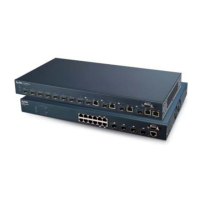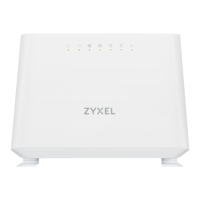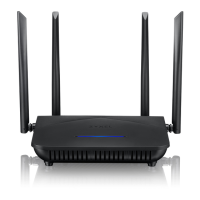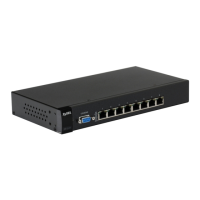Do you have a question about the ZyXEL Communications Dimension ES-3124 and is the answer not in the manual?
Details hardware and firmware capabilities, including ports, power, and protocols.
Illustrates various network use cases and configurations for the ES-3124.
Guides on placing the switch on a desktop or mounting it in an EIA rack.
Essential safety precautions to follow during installation and operation.
Details the front panel ports, LEDs, and rear panel features of the switch.
Illustrates stacking, uplink scenarios, and configuration access methods.
Covers initial login, status screen, and basic navigation of the web interface.
Explains changing passwords, switch lockout, and factory reset procedures.
Describes how to view general system statistics and hardware monitoring data.
Explains how to view port statistics, including summary and detailed port information.
Introduces screens for system info, general, switch, IP, and port setup.
Covers system information, general setup, IP address, and port configuration.
Explains tagged VLANs, frame handling, registration, and port trunking.
Covers 802.1Q VLAN settings, static VLANs, and viewing/editing configurations.
Details port-based VLAN concepts and configuration procedures.
Introduces and guides on configuring static MAC address forwarding rules.
Explains how to view and edit existing static MAC forwarding rules.
Explains the concept of filtering traffic based on MAC addresses and VLAN IDs.
Guides on configuring, viewing, and editing traffic filtering rules.
Covers STP introduction, terminology, operation, and port states.
Explains how to view STP status and configure STP settings on the switch.
Defines bandwidth control and how to set maximum allowable bandwidth for ports.
Explains how to limit broadcast, multicast, and DLF packets to prevent storms.
Details how to copy traffic from one port to another for analysis.
Explains link aggregation, dynamic aggregation, and IDs.
Covers viewing status and configuring link aggregation groups.
Introduces IEEE 802.1x and RADIUS for network access control.
Guides on setting up RADIUS server and IEEE 802.1x authentication.
Explains port security features like MAC address learning and limiting learned MACs.
Guides on enabling and configuring port security settings for ports.
Covers SNMP, login accounts, service access, and remote management settings.
Details SNMP configuration, login account setup, and trusted computer management.
Introduces Strictly Priority (SP) and Weighted Fair Scheduling (WFS) for traffic management.
Guides on setting up queuing methods and weights for traffic prioritization.
Explains packet classification for QoS and how to define traffic flows.
Guides on configuring, viewing, and editing classifier rules with examples.
Explains policy rules, DiffServ, DSCP, and Per-Hop Behavior.
Guides on configuring, viewing, editing policy rules, and provides an example.
Introduces VLAN stacking for service providers and provides an example.
Details port roles (Normal, Access, Tunnel) and the VLAN tag structure.
Guides on the steps and commands to configure VLAN stacking.
Explains how to configure static routes for IP traffic forwarding.
Covers viewing and editing static route entries in the summary table.
Provides access to firmware upgrade, configuration backup/restore, and reboot.
Guides on backing up, restoring configurations, loading defaults, and FTP file transfers.
Explains how to use the diagnostic screen for system logs, ping, and port tests.
Introduces cluster management for managing multiple switches as one.
Covers viewing cluster status, managing member switches, and configuring clusters.
Explains how MAC addresses are learned and forwarded by the switch.
Guides on displaying and sorting the MAC address table for network analysis.
Explains the Address Resolution Protocol and how ARP works.
Guides on displaying the ARP table to see IP to MAC address mappings.
Covers CLI overview, access methods, command conventions, and help.
Provides a comprehensive summary of available commands for system, switch, exit, IP, ether, and config.
Demonstrates usage of frequent sys, cluster, and IP commands.
Provides examples for sys log, version, monitor, VLAN list, cluster status, and IP commands.
Explains tagged VLAN concepts, explicit/implicit tagging, and filtering databases.
Details commands for configuring tagged VLANs, including GARP, GVRP, and port settings.
| Brand | ZyXEL Communications |
|---|---|
| Model | Dimension ES-3124 |
| Category | Network Router |
| Language | English |











